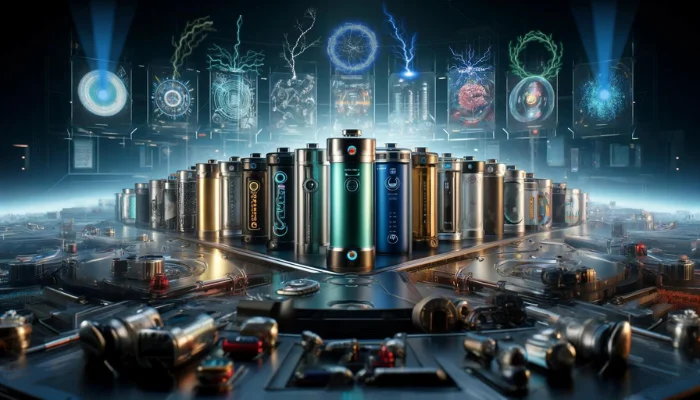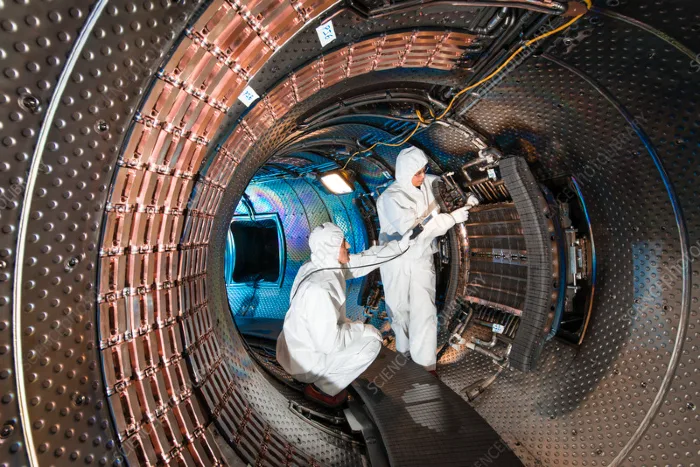Natural gas has been a dominant player in the US power generation landscape for years. However, the winds of change are blowing as renewable energy sources like solar and wind become more competitive, energy storage costs decrease, and green hydrogen gains prominence. Another intriguing contender in the energy revolution is supercritical carbon dioxide technology, designed to drastically reduce the footprint of conventional turbines, making them as small as household appliances.
The Supercritical Carbon Dioxide Difference
Supercritical carbon dioxide turbines first caught the attention of the world in 2020 when the US Department of Energy recognized their potential as an energy-efficient alternative to steam-driven turbines.
Conventional steam turbines, prevalent in power plants today, rely on 19th-century technology. Their sizes vary from under 100 kilowatts to over 250 megawatts, depending on their application. When used for electricity generation in central power plants, these turbines are colossal, often as large as buses or even larger.
In stark contrast, supercritical carbon dioxide turbines are revolutionary. They don’t utilize steam as their working fluid; instead, they employ a highly concentrated form of carbon dioxide, referred to as sCO2, which exists in a state between gas and liquid.
The Energy Department predicts that adopting these new supercritical carbon dioxide turbines could reduce energy consumption at power plants by an impressive 10%. However, their advantages don’t end there. These turbines have a significantly smaller physical footprint compared to their steam-driven counterparts, resulting in manufacturing efficiencies across the supply chain.
To put this into perspective, the Energy Department estimates that replacing a 20-meter steam turbine with an sCO2 turbine would shrink its size to just one meter.
Explaining this phenomenon, the Energy Department clarifies, “Above the critical point, CO2 does not change phases (that is, change from gas to liquid). Instead, it undergoes a change in density in even small shifts in temperature and pressure.” This unique property allows these turbines to extract a substantial amount of energy at high temperatures while maintaining relatively compact equipment.
In fact, they emphasize that “the sCO2 turbines may be an order of magnitude smaller than today’s utility-scale combustion or steam turbines.”
Stay tuned for the next section, where we delve further into the potential applications and benefits of supercritical carbon dioxide technology.
Harnessing the Sun's Power: Supercritical Carbon Dioxide Turbines and Concentrating Solar Power
Just like steam turbines, supercritical carbon dioxide turbines are incredibly versatile when it comes to fuel sources. The Energy Department envisions their deployment in coal and gas power plants as upgrades to enhance energy efficiency.
But what truly piques interest, especially from an environmental standpoint, is the synergy between supercritical carbon dioxide turbines and concentrating solar power (CSP) systems. Concentrating solar power relies on mirrors to collect and concentrate solar heat, a technology known for its potential to revolutionize renewable energy (read more about concentrating solar power here).
The aspect of harnessing heat has particularly captivated the Energy Department, which seeks ways to reduce the cost of concentrating solar power systems. Despite considerable support, CSP has been slow to gain a strong foothold in the US. However, the introduction of supercritical carbon dioxide technology could be a game-changer.
The Energy Department is enthusiastic about this union, stating, “Supercritical carbon dioxide (sCO2) power cycles have the potential to reduce the cost of concentrating solar power (CSP) by far more efficiently converting high-temperature solar heat into electricity.”
In the next section, we will explore how this technology might revolutionize the energy landscape and its potential environmental impact.

The Practical Application of Tiny Supercritical Carbon Dioxide Turbines
The Energy Department’s commitment to supercritical carbon dioxide (sCO2) technology is evident through its investment in a groundbreaking project: a new $155 million, 10 megawatt-equivalent demonstration power plant. This initiative is the culmination of the Energy Department’s public-private STEP (Supercritical Transformational Electric Power) program, which commenced in 2016 under the guidance of the National Energy Technology Laboratory (NETL).
NETL explains the rationale behind this venture, stating, “Power cycles based on an sCO2 working fluid have the potential for higher thermal efficiencies and lower capital costs compared to state-of-the-art steam-based power cycles.” These advantages, combined with enhanced performance benefits affecting various aspects such as balance of plant requirements, fuel consumption, emissions, water usage, and cost-of-electricity (COE), have generated widespread interest in sCO2 power cycles.
Leading this ambitious project is the independent research and development organization, Southwest Research Institute (SwRI), in partnership with firms GTI Energy and GE Vernova. Construction of the power plant’s structure took place between 2018 and 2020, with the successful launch of a supercritical CO2 compressor earlier this year.
In the latest progress report from SwRI, the team proudly announces the completion of mechanical work on the system, which includes the development of new turbines. These turbines are a mere fraction of the size of conventional steam turbines, approximately 1/10th in scale.
Remarkably compact, these new turbines are comparable in size to an office desk, household refrigerator, pony, credenza, or golf cart. Yet, their power output is nothing short of astonishing, as they have the capacity to generate electricity equivalent to that required for 10,000 typical homes.
In the next section, we will delve into the broader implications and potential environmental benefits of this groundbreaking technology.
Texas Takes the Lead: A Bright Future with Supercritical Carbon Dioxide Technology
If everything proceeds as planned, the STEP (Supercritical Transformational Electric Power) plant is set to achieve full operational status in early 2024. When that milestone is reached, Texas will once again find itself in the spotlight as a hub for pioneering energy technology. The STEP facility is nestled within the sprawling campus of the Southwest Research Institute (SwRI) in San Antonio, Texas.
This development aligns perfectly with Texas’s broader energy landscape. Despite its prominent presence in the fossil energy sector, the Lone Star State has emerged as a national leader in wind and solar power generation. Texas is also witnessing a surge in activities related to green hydrogen and electrofuels, further diversifying its energy portfolio.
While some public officials in Texas have been critical of renewable energy investments, SwRI remains unapologetic about championing supercritical carbon dioxide (sCO2) technology and its potential. In a press release last March, SwRI proudly declared, “The STEP Demo pilot plant is one of the largest demonstration facilities in the world for sCO2 technology to dramatically improve the efficiency, economics, operational flexibility, space requirements, and environmental performance of this new technology.”
While it remains to be seen when and how the Energy Department will evaluate the compatibility of this system with concentrating solar power, the connection has been on SwRI’s radar since at least 2012. Back then, the organization received an $8.5 million grant from the Energy Department to develop an sCO2 turbine specifically designed for use in concentrating solar systems. This initial grant paved the way for subsequent funding, including a $3.5 million award in 2019 aimed at advancing the integration of sCO2 technology with concentrating solar power systems.
To further solidify Texas’s position on the renewable energy map, SwRI garnered recognition from R&D World Magazine last year. They received an R&D 100 award for their collaboration with Hanwha Power Systems on an innovative system called an sCO2 compander. This system was tailored to convert thermal energy into electricity, specifically from a 10-megawatt concentrating solar power plant. The project received support from the Office of Energy Efficiency and Renewable Energy at the Energy Department.
More To Discover
- Jet Fuel from Human Waste: A UK Company’s Sustainable Breakthrough
- Logitech Tackles Plastic Waste By Switching To Ancient Material
- Groundbreaking ‘No Burn’ Energy Plant to Convert Waste to Fuel, Opens Soon
- UC Davis Scientists Use Volcanic Rock to Capture Carbon in Dry Climates, Offering New Hope for Climate Action
Conclusion
The ongoing efforts and investments in supercritical carbon dioxide technology, particularly in Texas, underscore its potential to reshape the energy landscape. As we eagerly await the full operation of the STEP plant in 2024, it’s clear that this innovative technology may hold the key to more efficient, sustainable, and environmentally friendly energy generation.





















